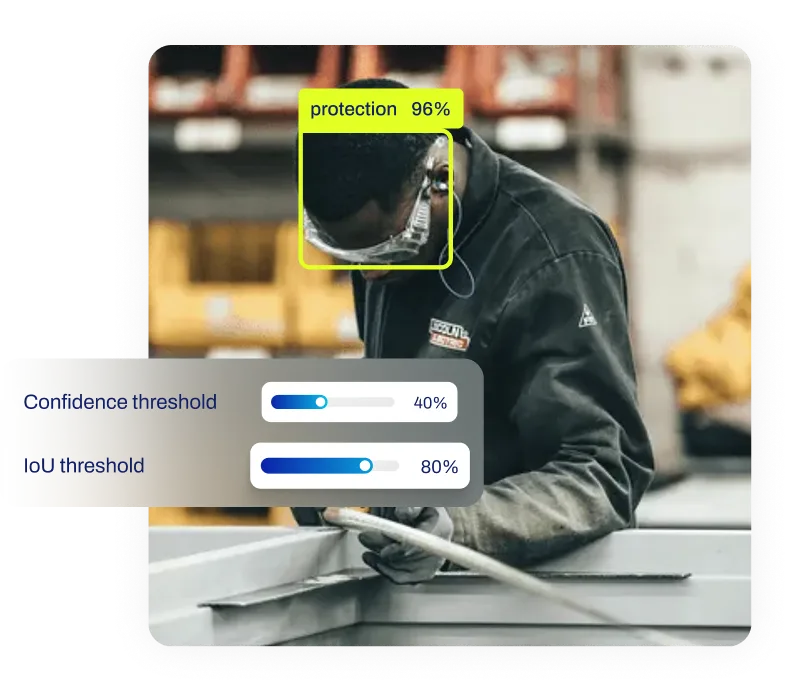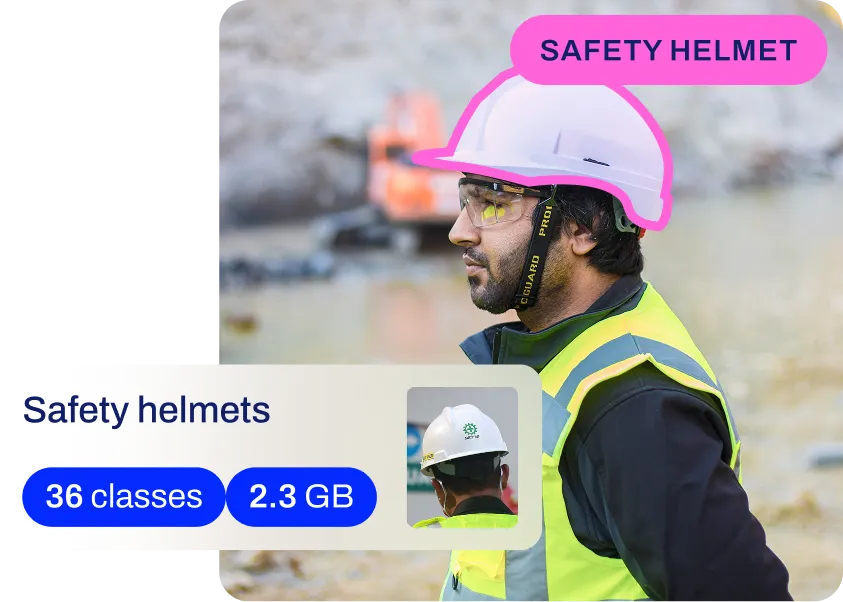Exploding Gradient
Learn how to manage exploding gradients in deep learning to ensure stable training for tasks like object detection, pose estimation, and more.
Exploding gradients refer to a critical instability encountered during the training of deep neural networks where the
gradients of the loss function accumulate and become
excessively large. This phenomenon occurs during
backpropagation, the process used to calculate
error derivatives and update the model weights. When
these gradients grow exponentially, they force the
optimization algorithm to make massive
updates to the network parameters. Consequently, the model can overshoot its optimal configuration, leading to a
divergent training process where the loss value fluctuates
wildly or becomes NaN (Not a Number), rendering the model unable to learn from the
training data.
Causes and Mechanics
The root cause of exploding gradients lies in the mathematical chain rule used to compute derivatives in deep
architectures. As errors propagate backward from the output layer to the input layer, they are multiplied by the
weights of each intermediate layer.
-
Deep Network Depth: in very deep networks, such as those used in
Deep Learning (DL), multiplying many gradients
greater than 1.0 results in a value that grows exponentially with each layer, similar to compound interest.
-
Poor Initialization: If the initial
weights are set too high, the signal amplifies at
every step. Proper
weight initialization strategies are essential to
keep signals within a manageable range.
-
High Learning Rates: A
learning rate that is too aggressive can exacerbate
the issue, causing the optimizer to take steps that are too large, pushing the model into unstable regions of the
error landscape.
-
Recurrent Architectures: This issue is notoriously common in
Recurrent Neural Networks (RNNs),
where the same weights are applied repeatedly over long time sequences.
Strategies for Prevention
Modern AI frameworks and architectures employ specific techniques to mitigate this risk, ensuring stable convergence.
-
Gradient Clipping: This is the most direct solution. It involves scaling down the gradient vector
if its norm exceeds a predefined threshold. This ensures that the updates remain within a reasonable limit,
regardless of how steep the error surface becomes. You can read more about the
mechanics of gradient clipping
in technical guides.
-
Batch Normalization: By normalizing layer inputs,
batch normalization stabilizes the
distribution of activations throughout the network, preventing values from spiraling out of control.
-
Weight Regularization: Techniques like L1 and L2
regularization penalize large weight values,
discouraging the model from maintaining parameters that could amplify gradients.
-
Advanced Optimizers: Algorithms like the
Adam optimizer adapt the learning rate for each
parameter, which can help handle inconsistent gradient scales better than standard
Stochastic Gradient Descent (SGD).
The following PyTorch snippet demonstrates how to implement gradient clipping
manually, a technique automatically handled in high-level training workflows like those in ultralytics:
import torch
import torch.nn as nn
# Define a simple linear model and optimizer
model = nn.Linear(10, 1)
optimizer = torch.optim.SGD(model.parameters(), lr=0.1)
# Simulate a training step
loss = model(torch.randn(10)).sum()
loss.backward()
# Apply gradient clipping to prevent explosion before the optimizer step
# This limits the maximum norm of the gradients to 1.0
torch.nn.utils.clip_grad_norm_(model.parameters(), max_norm=1.0)
optimizer.step()
Exploding vs. Vanishing Gradients
It is important to distinguish exploding gradients from their counterpart, the
vanishing gradient. While both stem from the
same chain-rule multiplication in deep networks, their effects are opposite:
-
Exploding Gradient: Gradients become essentially infinite. The model weights change drastically,
causing divergence and NaN errors. It is often fixed by clipping or lowering learning rates.
-
Vanishing Gradient: Gradients approach zero. The model weights in early layers stop changing,
causing the neural network to stop learning.
This is often addressed with skip connections (like in ResNets) or specific
activation functions like
ReLU.
Real-World Applications
Managing gradient magnitude is a prerequisite for training the sophisticated models used in modern
Artificial Intelligence (AI).
-
Natural Language Processing (NLP): In tasks like
machine translation or text generation using
LSTMs, models must process long
sentences. Without gradient clipping, the accumulated gradients over many time steps would cause the training to
crash, preventing the model from learning grammatical structures.
-
High-Performance Object Detection: When training state-of-the-art vision models like
YOLO11 on large datasets such as
COCO, the architecture is deep and the loss
landscape is complex. Ultralytics models employ stable architectural designs and default training hyperparameters
(including nominal batch sizes) that inherently prevent gradients from exploding, ensuring robust
object detection performance.
For further reading on stabilizing neural network training, referencing the
Stanford CS231n course notes provides a deeper mathematical
perspective.










.webp)

